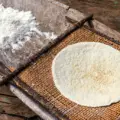Uttapam, also known as Uttappa or Oothapam, is a popular and wholesome breakfast dish that originates from South Indian cuisine. This savory pancake is made with a fermented batter of rice and urad dal, similar to that used for idli and dosa. However, what sets Uttapam apart is its unique thickness and the assortment of colorful vegetables that adorn its surface. This not only enhances the taste but also adds to its nutritional value.
The Art of Making Uttapam Batter
To make delicious Uttapam, it is essential to start with a well-prepared batter. You can either make the batter at home using the traditional method or opt for ready-made batter available in stores. If making it from scratch, soak urad dal and rice separately for about 4 to 5 hours. You may also include chana dal and fenugreek seeds for added flavor. After soaking, blend the dal and rice separately to a smooth consistency. Once both batters are ready, mix them together and let the batter ferment overnight or for at least 8 to 16 hours.
Ingredients:
For the Batter:
- 1 cup regular rice (or parboiled rice)
- 1/2 cup split black gram (urad dal)
- 1/4 teaspoon fenugreek seeds (methi seeds)
- Water (for soaking and grinding)
- Salt to taste
For the Uttapam:
- Finely chopped vegetables (e.g., onions, tomatoes, bell peppers, green chilies, and cilantro)
- Oil or ghee (clarified butter) for cooking
Uttapam Recipe
Step 1: Prepare the Batter
Rinse the rice, urad dal, and fenugreek seeds separately under running water until the water runs clear.
In a large bowl, add the rice, fenugreek seeds, and enough water to soak them. Let them soak for at least 4 hours or preferably overnight.
In another bowl, add the urad dal and enough water to soak it. Let it soak for at least 4 hours or preferably overnight.
Step 2: Grind the Batter
Drain the water from the soaked rice and add it to a blender. Grind it into a smooth paste, adding water as needed to achieve a thick, but pourable consistency.
Transfer the ground rice batter to a large bowl.
Now, drain the water from the soaked urad dal and grind it into a smooth and fluffy batter, adding water as needed.
Mix the urad dal batter with the ground rice batter in the bowl. Add salt to taste and mix well.
Step 3: Ferment the Batter
Cover the bowl with a lid or a cloth and let the batter ferment in a warm place for 8-10 hours or overnight. During fermentation, the batter will rise and become slightly airy.
Step 4: Prepare the Uttapam
After fermentation, the batter will be thick and have a slightly sour aroma. You can adjust the consistency by adding a little water if it’s too thick.
Heat a non-stick or cast-iron skillet (tawa) on medium heat. Grease it lightly with oil or ghee.
Pour a ladleful of the fermented batter onto the hot skillet and spread it in a circular motion to form a thick disc, similar to a pancake.
Sprinkle the finely chopped vegetables on top of the uttapam while the batter is still wet, pressing them lightly into the batter.
Step 5: Cook the Uttapam
Drizzle some oil or ghee around the edges of the uttapam and a little on top.
Cover the skillet with a lid and let the uttapam cook on medium-low heat for about 2-3 minutes, or until the bottom turns golden brown.
Step 6: Flip and Cook
Gently flip the uttapam using a spatula to cook the other side.
Cook the other side for another 1-2 minutes until it’s cooked through and lightly browned.
Step 7: Serve
Remove the cooked uttapam from the skillet and serve it hot with coconut chutney, sambar, or tomato chutney.
Customizing Your Uttapam Toppings
One of the key features of Uttapam is its customizable toppings. While traditional Uttapam includes onions, tomatoes, and green chilies, you can experiment with various vegetables according to your preference. Finely chopped capsicum, grated carrots, and sweet corn are popular choices that add a burst of color and flavor to the dish. You can also add a touch of heat with sliced green chilies or enhance the taste with fresh coriander leaves.
The Cooking Process
Cooking Uttapam is a simple yet enjoyable process. Heat a cast iron or non-stick tawa (griddle) over medium flame. For a golden color, using a cast iron tawa is recommended. Once the tawa is hot, add a few drops of oil and spread it using a halved potato or small onion. This prevents the batter from sticking and helps in spreading it evenly. Pour a ladleful of batter onto the tawa and spread it in a circular motion to create a slightly thick pancake. Sprinkle the desired toppings over the batter and drizzle some oil around the edges. Cook the Uttapam for 2 to 3 minutes until the bottom surface turns light golden brown. Flip it gently and cook the other side for a minute or until it is cooked through. Repeat the process for the remaining batter, and your Uttapam is ready to be served.
Tips and Variations
Here are some tips and variations to help you create the perfect Uttapam:
- Batter Consistency: Ensure that the batter is slightly thicker than dosa batter but thinner than idli batter. This consistency will result in a fluffy and well-cooked Uttapam.
- Choice of Vegetables: Feel free to experiment with different vegetables based on your taste preferences and availability. Grated beetroot, sliced bell peppers, or even sautéed spinach can make delightful additions to your Uttapam.
- Onion Uttapam: If you prefer a simple yet flavorful Uttapam, you can stick to just onions and green chilies as toppings. This classic combination never fails to impress.
- Cheese Uttapam: For a cheesy twist, garnish your Uttapam with shredded mozzarella or cheddar cheese. The melted cheese adds a delightful gooeyness to the dish.
- Enhancing the Flavor: You can further enhance the flavor of your Uttapam by adding ingredients like grated coconut, roasted cumin seeds, or even a sprinkle of chaat masala.
Serving Suggestions
Uttapam pairs perfectly with a variety of accompaniments, adding to the overall taste experience. Here are some traditional options:
- Chutneys: Serve Uttapam with a side of coconut chutney, coriander chutney, or tomato chutney. These tangy and flavorful dips complement the savory pancake beautifully.
- Sambar: Another popular choice is to serve Uttapam with sambar, a lentil-based vegetable stew. The combination of the soft Uttapam and the aromatic sambar is truly delightful.
- Pickles: For those who enjoy a bit of tanginess, serving Uttapam with tangy pickles like mango pickle or lemon pickle can add an extra zing to the meal.
Making Uttapam Healthier
While Uttapam is already a nutritious breakfast option due to its fermented batter and vegetable toppings, you can make it even healthier by incorporating some variations:
- Millet Uttapam: Replace a portion of rice with pearl millet (bajra) to make millet Uttapam. This adds a nutty flavor and boosts the nutritional value of the dish.
- Oats Uttapam: Add powdered oats to the batter to create a healthier version of Uttapam. Oats provide dietary fiber and make the dish more filling.
- Ragi Uttapam: Substitute a portion of rice with ragi (finger millet) flour. Ragi is rich in calcium and adds a unique taste to the Uttapam.
- Instant Suji Uttapam: Make a quick and easy version of Uttapam using semolina (suji) instead of rice. This is a great option when you’re short on time.




